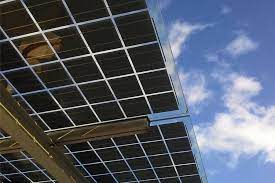As the world continues to move towards a more sustainable future, solar energy has become increasingly popular as a clean and renewable energy source. According to the National Renewable Energy Laboratory (NREL), the technical potential for solar energy in the United States is enormous. NREL estimates that the US has the potential to generate more than 1,400 terawatt-hours (TWh) of solar energy per year, which is more than 100 times the country’s current electricity consumption. In recent years, advances in solar technology have made it even more efficient and cost-effective, making it an attractive option for both residential and commercial use.
One of the latest advancements in solar technology is known as bifacial solar panels. These panels are designed to capture sunlight on both sides, allowing them to generate more electricity than traditional solar panels. By capturing sunlight from both the front and back of the panel, they can increase energy production by up to 25%, making them an attractive option for homeowners and businesses looking to maximize their energy output.
Bifacial solar panels work by using a layer of material that reflects sunlight from the back of the panel onto the front, increasing the amount of sunlight that can be captured and converted into electricity. This technology has been around for several years, but recent improvements in manufacturing techniques and design have made them even more effective and efficient.
One of the main benefits of bifacial solar panels is their ability to generate more electricity in a smaller amount of space. Because they can capture sunlight from both sides, they can be installed closer together than traditional solar panels, allowing for greater energy production in a smaller area. This makes them an ideal option for residential properties with limited roof space or businesses with a high demand for electricity. This benefit was discussed in the Lansing City Council meeting in New York as they discussed the expansion of solar in their area.
Another benefit of bifacial solar panels is their increased durability. Traditional solar panels are often made with a tempered glass front and a plastic backing, which can crack or degrade over time. Bifacial panels, on the other hand, are often made with a more durable tempered glass front and a tempered glass back, making them more resistant to damage from weather and other environmental factors.
Additionally, bifacial solar panels can be installed in a variety of locations, including flat roofs, ground-mounted arrays, and even on carports and other structures. This flexibility makes them an attractive option for businesses and municipalities looking to install solar panels in unique or unconventional locations.
As with any new technology, there are some potential drawbacks to consider when it comes to bifacial solar panels. One of the main concerns is their cost, which can be higher than traditional solar panels due to their more complex design and manufacturing process. However, as the technology becomes more widely adopted, the cost is expected to come down, making them a more affordable option for homeowners and businesses alike.
Another potential concern is their efficiency in certain weather conditions. Bifacial solar panels are designed to capture sunlight from both sides, which can be beneficial in areas with a high amount of reflected light, such as snow-covered landscapes or near bodies of water. However, in areas with a high amount of diffuse light, such as cloudy or overcast conditions, traditional solar panels may be more effective at generating electricity.
Overall, bifacial solar panels are an exciting new technology that has the potential to revolutionize the solar industry. Their ability to generate more electricity in a smaller amount of space, their increased durability, and their flexibility in installation locations make them an attractive option for homeowners and businesses looking to reduce their carbon footprint and save money on their energy bills. As the technology continues to evolve and become more affordable, we can expect to see even more widespread adoption of bifacial solar panels in the years to come.
Hear mentions of bifacial solar panels in local government meetings surfaced by the Cloverleaf AI platform here:
- Planning & Zoning Commission Meeting – Camanche, IA
- Environmental Advisory Committee, McCandless City Council – McCandless, PA
- Lee County Zoning Board of Appeals, Lee County Commissioners – Lee, IL







